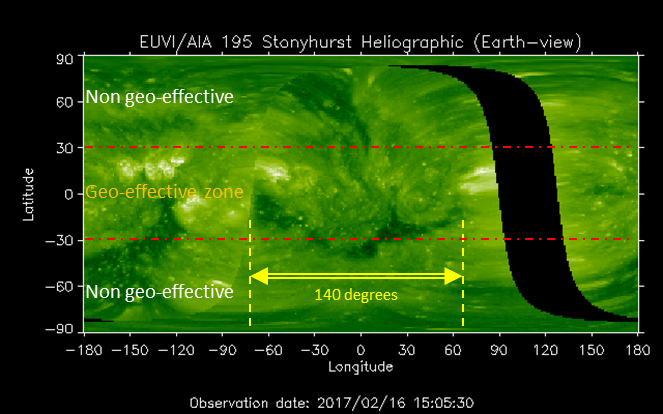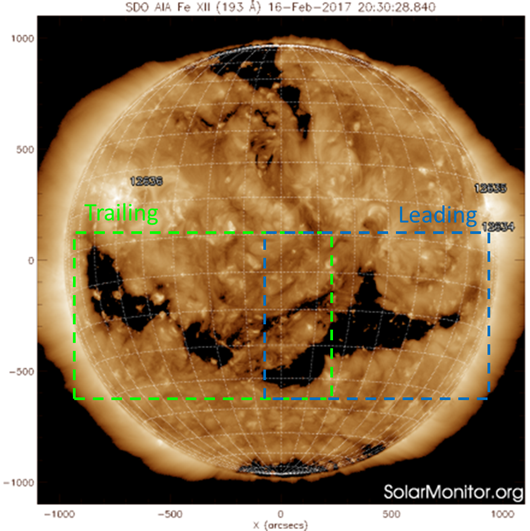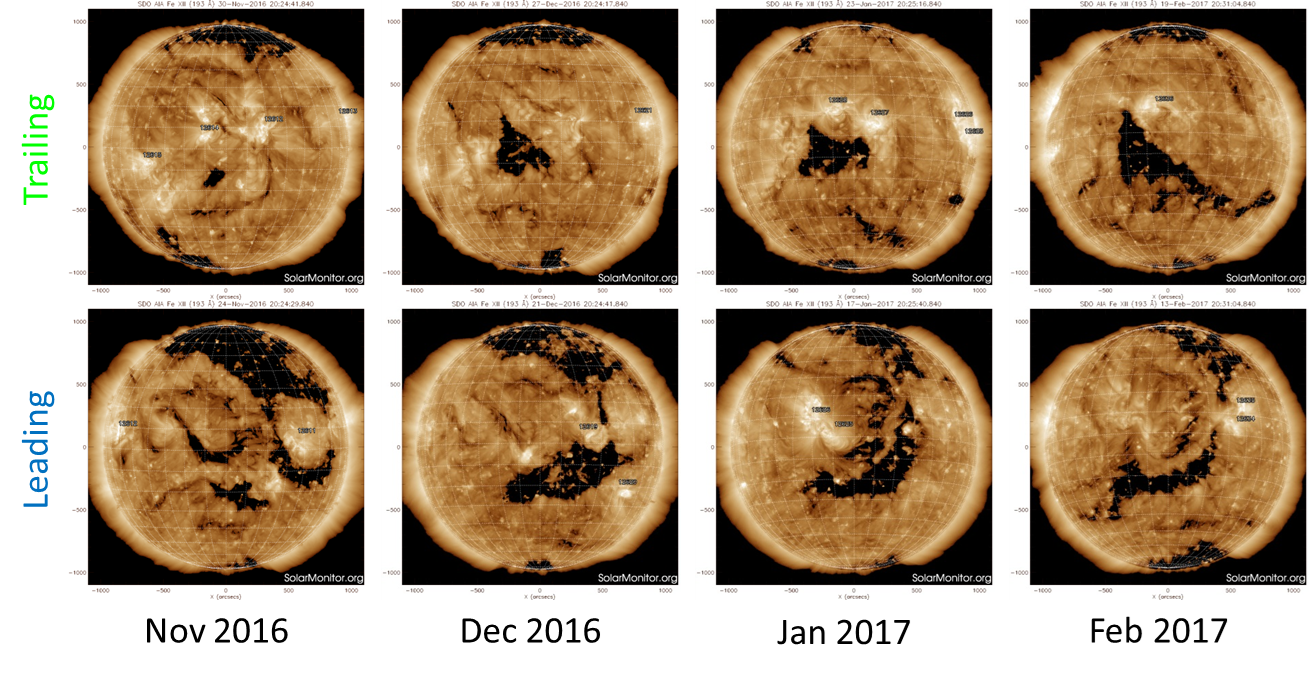Once again, a coronal hole (CH) is making the headlines! This time, it is not its surface area or the speed of the associated particle stream that is particularly impressive, but its width. Coronal holes are regions in the hot solar atmosphere ("corona") where the plasma density at that temperature is very low compared to its surroundings, and thus they look like dark shapes in the corona. Linked to unipolar, open magnetic fields stretching into space, they are the source of the high-speed solar wind and can create geomagnetic disturbances. The wider the coronal hole, the longer any effects of the high speed stream will last.

The figure above shows the Sun in extreme ultraviolet (EUV) as seen with SDO's AIA instrument at 19.3nm, corresponding to temperatures in the corona of more than 1 million degrees. It shows the coronal hole as it transits the central meridian from 12 till 18 February, with an interval of 2 days. Unlike the usual polar extensions and trans-equatorial CHs, which are long and generally extending in the north-south direction, this CH is long too but extending in the east-west direction. In fact, as can be seen from the EUV synoptic map underneath, this particular CH stretches about 140 degrees, or more than a third of the solar circumference. This means a length of at least 1.5 million km or more than 4 times the earth-moon distance.

The CH has the same magnetic polarity as the northern polar CH. In fact, the leading part of the current elongated CH developed from the remnants of the extension from the northern polar CH. The trailing portion of the elongated CH developed from a small, isolated equatorial CH. Hence, the CH started to develop late November from these isolated patches, and continued to grow and reaching out to each other since. The image underneath shows the leading and trailing portion of the CH on 16 February, with the subsequent images showing the Sun in EUV one Carrington rotation apart, with the top and bottom row picturing respectively the trailing and leading portions of the CH.


Such stretched CHs usually result in long lasting effects from the associated high speed stream (HSS). However, in this case, the middle portion of this stretched CH is narrow and relatively far away from the solar equator (35-40 degrees), which is believed too far south to be in a geo-effective position. Hence, the HSS from the leading portion of the CH started to influence the earth environment on 17 February, with maximum speeds near 600 km/s. The wind speed then gradually decreased till background values of 450 km/s late on 20 February. The wind speed is expected to pick up again around 23-24 February, following the arrival of the HSS related to the trailing portion of the CH.





